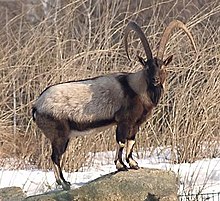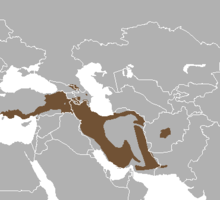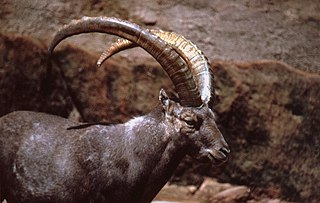
An ibex is any of several species of wild goat , distinguished by the male's large recurved horns, which are transversely ridged in front. Ibex are found in Eurasia, North Africa and East Africa. The name ibex comes from Latin, borrowed from Iberian or Aquitanian, akin to Old Spanish bezerro "bull", modern Spanish becerro "yearling". Ranging in height from 70 to 110 centimetres (27–43 in) and weighing 90 to 120 kilograms (200–270 lb), ibex can live up to 20 years. Three closely related varieties of goats found in the wild are not usually called ibex: the markhor, western tur, and eastern tur.

The mouflon is a wild sheep native to Cyprus, the Caspian region from eastern Turkey, Armenia, Azerbaijan, and Iran. It is thought to be the ancestor of all modern domestic sheep breeds.

The Alpine ibex, also known as the steinbock, is a species of goat that lives in the Alps of Europe. It is one of ten species in the genus Capra and its closest living relative is the Iberian ibex. The Alpine ibex is a sexually dimorphic species: males are larger and carry longer horns than females. Its coat colour is brownish grey. Alpine ibexes tend to live in steep, rough terrain and open alpine meadows. They can be found at elevation as high as 3,300 m (10,800 ft) and their sharp hooves allow them to scale their mountainous habitat.

Capra is a genus of mammals, the goats, comprising ten species, including the markhor and several species known as ibexes. The domestic goat is a domesticated species derived from the wild goat. Evidence of goat domestication dates back more than 8,500 years.
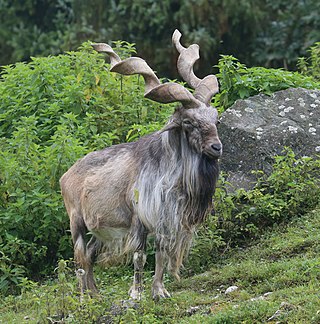
The markhor is a large wild Capra (goat) species native to South Asia and Central Asia, mainly within Pakistan, the Karakoram range, parts of Afghanistan, and the Himalayas. It is listed on the IUCN Red List as Near Threatened since 2015.
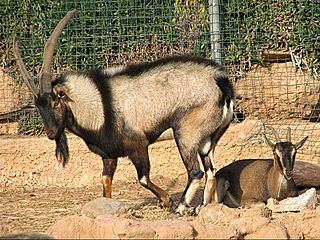
The kri-kri, sometimes called the Cretan goat, Agrimi, or Cretan Ibex, is a feral goat inhabiting the Eastern Mediterranean, previously considered a subspecies of wild goat. The kri-kri today is found only in Greece on three small islands just off the shore of Crete. The kri-kri can also be found on the island of Sapientza which was brought to the island in great numbers, in order to protect the species from extinction.

The wild goat is a wild goat species, inhabiting forests, shrublands and rocky areas ranging from Turkey and the Caucasus in the west to Turkmenistan, Afghanistan and Pakistan in the east. It has been listed as near threatened on the IUCN Red List and is threatened by destruction and degradation of habitat.

The Iberian ibex, also known as the Spanish ibex, Spanish wild goat and Iberian wild goat, is a species of ibex endemic to the Iberian Peninsula. Four subspecies have been described; two are now extinct. The Portuguese ibex became extinct in 1892, and the Pyrenean ibex became extinct in 2000. A project to clone the Pyrenean ibex resulted in one clone being born alive in July 2003, making it the first taxon to become "un-extinct", although the clone died several minutes after birth due to physical defects in its lungs.

The West Caucasian tur is a mountain-dwelling goat-antelope native to the western half of the Caucasus Mountains range, in Georgia and European Russia. It is listed as Endangered on the IUCN Red List, as the wild population is estimated to be between 5,000 and 6,000 individuals.

The East Caucasian tur, also known as the Daghestani tur, is a mountain-dwelling caprine living in the eastern half of the Greater Caucasus mountains, in Azerbaijan, Georgia, and European Russia. It inhabits rough mountainous terrain, where it eats mainly grasses and leaves. It is listed as near threatened on the IUCN Red List.
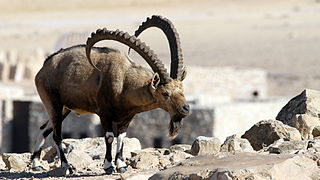
The Nubian ibex is a desert-dwelling goat species found in mountainous areas of northern and northeast Africa, and the Middle East. It was historically considered to be a subspecies of the Alpine ibex, but is now considered a distinct species. The wild population is estimated at 4,500 mature individuals, and it is classified as vulnerable.

The walia ibex is a vulnerable species of ibex. It is sometimes considered an endemic subspecies of the Alpine ibex. If the population were to increase, the surrounding mountain habitat would be sufficient to sustain only 2,000 ibex. The adult walia ibex's only known wild predator is the hyena. However, young ibex are often hunted by a variety of fox and cat species. The ibex are members of the goat family, and the walia ibex is the southernmost of today's ibexes. In the late 1990s, the walia ibex went from endangered to critically endangered due to the declining population. The walia ibex is also known as the Abyssinian ibex. Given the small distribution range of the Walia ibex in its restricted mountain ecosystem, the presence of a large number of domestic goats may pose a serious threat that can directly affect the survival of the population.
The wildlife of Iran include the fauna and flora of Iran.

The Armenian mouflon is an endangered subspecies of mouflon endemic to Iran, Armenia, Nakhchivan Autonomous Republic of Azerbaijan, Turkey and Iraq.
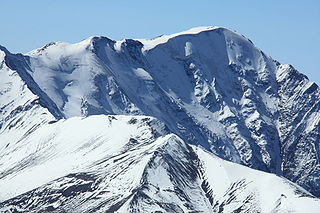
Shahdag National Park — is a national park of Azerbaijan. It was established on an area of 115,900 hectares (1,159 km2) in the Quba Rayon, Qusar Rayon, İsmayıllı Rayon, Qəbələ Rayon, Oğuz Rayon and Şamaxı Rayon administrative districts on December 8, 2006. It was enlarged by presidential decree on July 8, 2010 from 115,900 hectares (1,159 km2) to 130,508.1 hectares (1,305.081 km2).

The Siberian ibex, also known using regionalized names including Altai ibex,Asian ibex, Central Asian ibex, Gobi ibex, Himalayan ibex, Mongolian ibex or Tian Shan ibex, is a polytypic species of ibex, a wild relative of goats and sheep. It lives in Central Asia, and is, by far, the most widely-distributed species in the genus Capra. In terms of population stability, Siberian ibex are currently ranked as Near Threatened, mostly due to over-hunting, low densities and overall decline; still, reliable data is minimal and difficult to come by, in addition to the animals’ expansive natural range, so accurate observations are still scant. The Siberian ibex has, formerly, been treated as a subspecies of the Eurasian Alpine ibex, and whether or not it is a single species or a complex of distinct units that stand out as genetically-distinct is still not entirely clear. The Siberian ibex is the longest and heaviest member of the genus Capra, though its shoulder height is slightly surpassed by the markhor.

The Sindh ibex or Turkman wild goat is a vulnerable subspecies of wild goat endemic to southwest Pakistan, and southeast Iran.
The Chiltan ibex or Chiltan goat is a wild goat endemic to Chiltan, Balochistan, Pakistan.

Jeitun (Djeitun) is an archaeological site of the Neolithic period in southern Turkmenistan, about 30 kilometers north of Ashgabat in the Kopet-Dag mountain range. The settlement was occupied from about 7200 to 4500 BC possibly with short interruptions. Jeitun has given its name to the whole Neolithic period in the foothills of the Kopet Dag.

Goat evolution is the process by which domestic goats came to exist through evolution by natural selection. Wild goats — medium-sized mammals which are found in noticeably harsh environments, particularly forests and mountains, in the Middle East and Central Asia — were one of the first species domesticated by modern humans, with the date of domestication generally considered to be 8,000 BCE. Goats are part of the family Bovidae, a broad and populous group which includes a variety of ruminants such as bison, cows and sheep. Bovids all share many traits, such as hooves and a herbivorous diet and all males, along with many females, have horns. Bovids began to diverge from deer and giraffids during the early Miocene epoch. The subfamily Caprinae, which includes goats, ibex and sheep, are considered to have diverged from the rest of Bovidae as early as the late Miocene, with the group reaching its greatest diversity in the ice ages.
